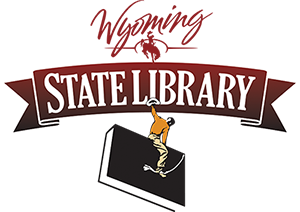 The North Dakota State Library has compiled this useful list of educator resources on misinformation and disinformation that we’re reposting from their blog.
The North Dakota State Library has compiled this useful list of educator resources on misinformation and disinformation that we’re reposting from their blog.
News Literacy Project
The News Literary Project (www.newslit.org) offers educators a variety of resources, both to use with students and as personal references. These resources include:
- Checkology – An e-learning platform for students in grades six through twelve; teaches lessons using real-world examples, news clips, and stories.
- Resource Library – This resource contains classroom activities, as well as infographics and posters; lessons are broken down by age group: fourth to sixth grade, seventh to ninth, and tenth and beyond.
- Newsroom to Classroom – This program brings journalists, either virtually or in-person, to middle and high school classrooms.
- The Sift – A weekly newsletter that highlights media news, recent examples of misinformation, as well as prompts and tips for classroom discussions and activities.
- Is that a Fact? Podcast – Podcast episodes pertaining to news stories and major events; available from numerous platforms, including Apple Podcasts, Google Podcasts, Stitcher, Spotify, iHeart, and Amazon Music.
- Virtual Rumor Rundown – Review of examples of mis-and-disinformation with news literacy lessons and insights.
- Informable App – An app that tests literacy know-how in a game-like format; can be downloaded from Google Play or the App Store.
News Literacy Project resources may be accessed at www.newslit.org -> For Educator (under the hamburger icon) -> Educator Tools for the Classroom.
Newseum
Newseum (https://www.newseumed.org/) offers lesson plans, artifacts, videos, and historical events analysis for students in third grade through adulthood. Items can be sorted by “Type of Tool,” Topic,” and “Grade.” Some of the materials are copyrighted and require a (free) account signup.
News Guard
News Guard (https://www.newsguardtech.com/) rates online content, with humans being the primary judges, using nine criteria of trustworthiness. News stories must show the following to be deemed reliable:
- Does not repeatedly publish false content
- Gathers and presents information responsibly
- Regularly corrects or clarifies errors
- Handles the difference between news and opinion responsibly
- Avoids deceptive headlines
- Website discloses ownership and financing
- Clearly labels advertising
- Reveals who is in charge, including possible conflicts of interest
- The site provides the names of content creators, along with either contact or biographical information
Each online resource is given a numerical value between 0-100. The closer to 100, the higher the likelihood that a source provides credible information. Badges of green (credible), red (not credible), satire (not considered news, meant strictly for entertainment), and platform (unable to rate due to too many different creators) are also given. Nutrition labels occupy these ratings to better explain their reasoning.
Society of Professional Journalists (SPJ)
Society of Professional Journalists (https://www.spj.org/) outlines the code of ethical journalism. Such qualities include seeking the truth and reporting it, minimizing harm, acting independently, and being accountable and transparent. This resource offers various infographics and discussion questions for evaluating reliability in reported news.
